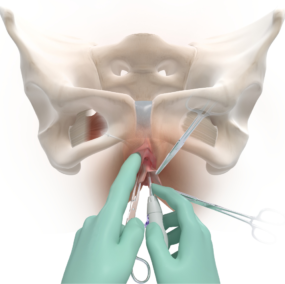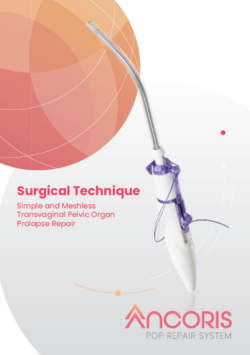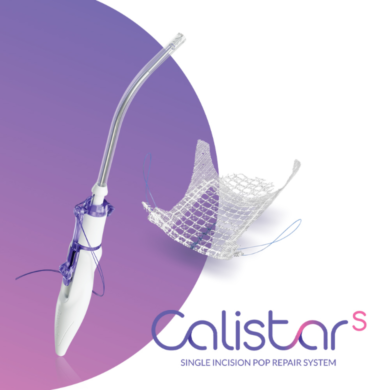
PRODUCT INSIGHTS
FIRST LINE TREATMENT
ANCORIS is a transvaginal sacrospinous ligament anchoring system to treat women with apical prolapse using a safe, reliable and minimally invasive procedure. It can be used to treat isolated apical defects or to perform a concurrent apical fixation for minimizing the risk of recurrence of a native tissue repair (1).
UNIVERSAL SYSTEM
Considering the patient individual condition and the defect which must be treated, ANCORIS POP Repair System can be inserted to the sacrospinous ligament by two different transvaginal approaches, paravesical or pararectal. The use of ANCORIS provides the possibility to perform apical suspension in a reduced operation duration2.
EFFECTIVE MINIMALLY INVASIVE PROCEDURE
A sacrospinous fixation needs to withstand the high pressures affecting the pelvic floor. Clinical studies have shown that the tissue anchoring systems offer a superior primary fixation compared to suturing devices in terms of pull-out resistance. With the help of anchoring devices such as ANCORIS, the risk of recurrent apical prolapse after sacrospinous fixation can be reduced3,4.
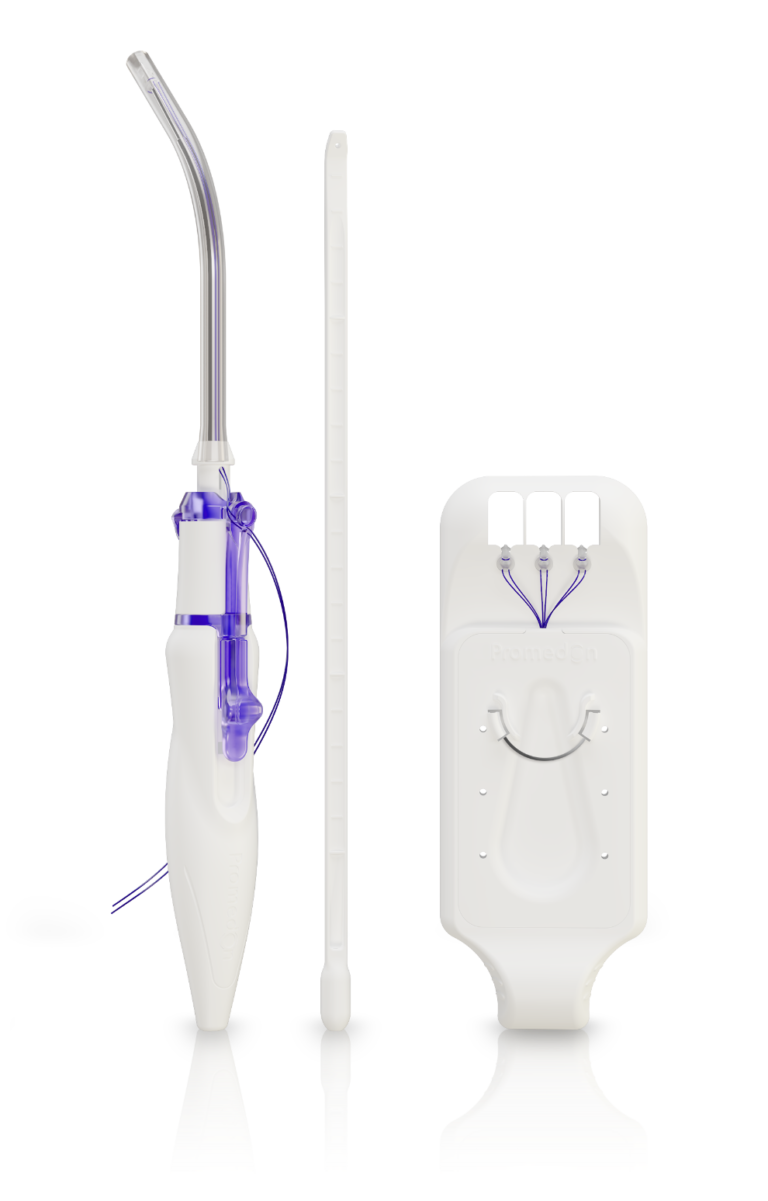
- Sahrif J, et. al.: Recurrent pelvic organ prolapse: International Urogynecological Association Research and Development Committee opinon – Int Urogynecol J (2016).
- IUGA Congress 2019, Poster 30 (Suppl. 1):S320.
- Halaska M, Sedlacek R, Lincova M, Nanka O, Maxova K, Charles University Czech TU Prague: Fixation ability of contemporary used vaginal kits in prolapse surgery.
- Castro R, et. al.: Vaginal sacrospinous ligament fixation using tissue anchor system vs. a traditional technique for women with apical vaginal prolapse: A randomized controlled trial – Female Pelvic Medicine and Reconstructive Surgery (2020)
PRODUCT HIGHLIGHTS
TISSUE ANCHORING SYSTEM TAS
The TAS was developed to provide a reliable fixation to the sacrospinous ligament (SSL). The TAS is composed of a polypropylene anchor with an attached polypropylene suture. With its six circumferentially arranged polypropylene spikes and the safety stop at the bottom of the anchor, the TAS provides:
- High pull-out force and accuracy
- Reliable fixation
- Safety with regard to vascular and neural structures, due to the additional protection tube provided for the implantation procedure
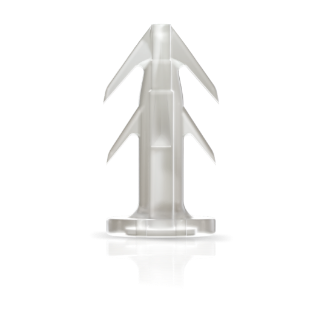
RETRACTABLE INSERTION GUIDE – RIG
The Retractable Insertion Guide was developed to reach the targeted area for performing an accurate and safe anchor insertion. The configuration of the RIG, with its protective tube, guarantees the integrity of surrounding tissue during the implantation of the TAS into the sacrospinous ligament. With its ergonomic design, small diameter and retractable mechanism for connecting and releasing the anchors, the RIG provides:
- Precision and safety in surgical maneuvers
- Minimal dissection requirement
- Total control of connection and release of TAS anchors
SURGICAL TECHNIQUE
SURGICAL TECHNIQUE
ANCORIS IN PRACTICE
- Uterine prolapse
- Vaginal vault prolapse
- Anterior prolapse with apical defect
- Posterior prolapse with apical defect
- Apical support for durable results in anterior and posterior repair
CONTRAINDICATIONS &
PRECAUTIONS
ANCORIS must not be used in:
- Fertile women
- Patients with any active or latent infection of the vagina, cervix or uterus
- Patients with previous or current vaginal, cervical or uterine cancer
- Previous, current or planned pelvic radiation therapy
- Known allergy to polypropylene
The implantation of ANCORIS should be based on a thorough patient assessment along with the patient’s individual characteristics and preferences. The following items must also be considered:
- ANCORIS must ONLY be used by surgeons experienced in transvaginal pelvic floor reconstruction.
For further precautions and warnings, we refer to our Instruction for Use

